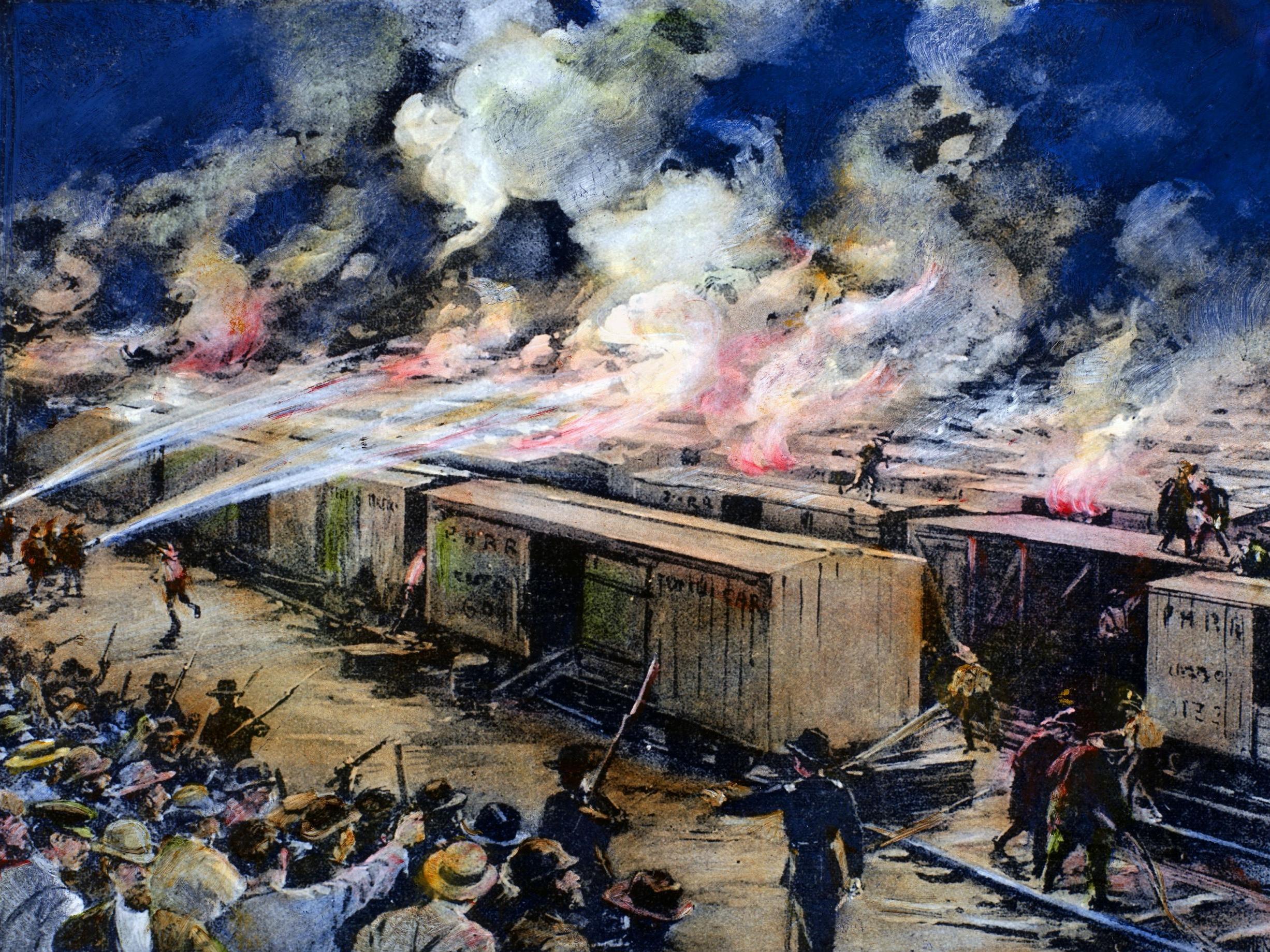Labor Day 2018: The riot that gave rise to America's national holiday
Pullman Strike of 1894 saw lives lost but forced US to re-evaluate its relationship with workers
Your support helps us to tell the story
From reproductive rights to climate change to Big Tech, The Independent is on the ground when the story is developing. Whether it's investigating the financials of Elon Musk's pro-Trump PAC or producing our latest documentary, 'The A Word', which shines a light on the American women fighting for reproductive rights, we know how important it is to parse out the facts from the messaging.
At such a critical moment in US history, we need reporters on the ground. Your donation allows us to keep sending journalists to speak to both sides of the story.
The Independent is trusted by Americans across the entire political spectrum. And unlike many other quality news outlets, we choose not to lock Americans out of our reporting and analysis with paywalls. We believe quality journalism should be available to everyone, paid for by those who can afford it.
Your support makes all the difference.Labor Day is being observed in the US today, the national holiday commonly celebrated with parades, parties, picnics, cookouts and shopping sprees.
Commemorated in the latest Google Doodle, the event was inaugurated in the late 19th century to honour the American worker and the social and economic achievements of organised labour.
There is some debate over who first proposed it.
Peter McGuire, general secretary of the Brotherhood of Carpenters and Joiners and vice president of the American Federation of Labor, is often credited with putting forward the initial idea in spring 1882.
However, Matthew Maguire, machinist and secretary of the Central Labor Union (CLU) in New York has also been posited as an alternative source.
The first Labor Day was duly held on 5 September 1882 in New York City at the instigation of the CLU, with a street parade held in Union Square.
Other cities followed suit and Oregon became the first state to make it an official holiday in 1887. By 1894, 34 states observed the date, prompting the president, Grover Cleveland, to sign a bill into law that June making it an official national holiday.
President Cleveland’s bill coincided with one of the darkest episodes in the history of American industrial relations: the Pullman Strike.
The result of unrest born of poor working conditions and wages, the dispute saw 4,000 American Railway Union (ARU) workers employed at the Pullman Company plant on Chicago’s South Side engage in a series of wildcat strikes between 11 May and 20 July 1894.
Pullman, a manufacturer of railroad cars, ran the local community as a company town, refusing to let its employees own their own homes. When it sacked operatives and slashed wages without lowering rents and utility bills, its staff downed tools in protest.

Eugene V Debs, head of the newly formed ARU, subsequently stopped the movement of cars to railroads and called for the boycott of all trains that towed a Pullman carriage, the disorder resulting hit all railway lines west of Detroit, Michigan, with 250,000 workers in 27 states joining the cause.
The company stood firm and refused to recognise the protests, resulting in rioting in which 37 people were killed, 57 injured and $80m of damage caused. Cleveland had to send in the US Army to restore order.
Labor Day thus played an important role in stabilising, resetting and advancing America’s relationship with its working men and women in the aftermath of this tragedy.

Join our commenting forum
Join thought-provoking conversations, follow other Independent readers and see their replies
Comments